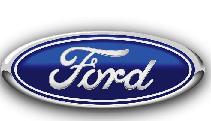Ford's Profit
Ford Reports Profit of $2.1 Billion in Quarter
 The Ford Motor Company had its best quarterly performance in six years, earning $2.1 billion, and is a year ahead of its previous target for profitability even though the market for new vehicles remains near recent lows, executives said Tuesday.
The Ford Motor Company had its best quarterly performance in six years, earning $2.1 billion, and is a year ahead of its previous target for profitability even though the market for new vehicles remains near recent lows, executives said Tuesday.
The profit is evidence of how much Ford has managed to increase sales with new products but also a clear indication of how deeply the automaker has shrunk its operations by closing plants and eliminating tens of thousands of jobs to cut costs.
The last time Ford earned a quarterly operating profit of $2 billion, in 2004, automakers sold nearly 17 million vehicles in the United States. This year, Ford expects industry sales to be less than 12 million.
Based on its first-quarter results, Ford said it now expects "solid profits" and positive cash flow from its automotive operations for 2010, a year sooner than its earlier forecasts. The net profit was equal to 50 cents a share, compared with a loss of $1.4 billion, or 60 cents a share, one year ago.
"The basic engine that drives our business results — products, market share, revenue and cost structure — is performing stronger each quarter, even as the economy and vehicle demand remain relatively soft," the chief executive, Alan R. Mulally, said on a conference call Tuesday. "While we are pleased with our progress we do not underestimate the challenges ahead. Even as we see positive signs in the global economy, the recovery is fragile."
Revenue increased to $28.1 billion, up from $24.4 billion in the first quarter of 2009, during the heart of the recession.
Ford, the only one of the three Detroit automakers to avoid seeking bankruptcy protection last year, has earned a profit in four consecutive quarters for the first time since 2005. The total profit for that 12-month period was $6.2 billion.
Ford also continued a trend of surpassing expectations on Wall Street, where analysts had projected a first-quarter operating profit of 31 cents a share. Ford’s actual operating profit, before taxes and $125 million in one-time charges, was 46 cents a share, or $2 billion.
The company earned $1.2 billion from its automotive operations, compared with a loss of $2 billion in the first quarter a year ago. Ford Motor Credit earned $828 million, compared to a $36 million loss.
The automaker earned $1.2 billion in North America, compared with a $665 million loss a year ago. Ford said it planned to build 625,000 vehicles in the United States and Canada in the second quarter, 9 percent more than the first quarter and 39 percent more than the year-ago period.
"This is a more encouraging start to the year than we anticipated,” Ford’s chief financial officer, Lewis W. K. Booth, told reporters at Ford’s headquarters. “The fact that we’ve got our cost structure under control is also helping the bottom line."
However, Mr. Booth said the company does not necessarily expect each of the next three quarters to be as strong as the first, particularly if an improving economy leads to higher interest rates later in the year.
"It would be unwise to think of $2 billion as a running rate for the year," he said.
Ford still has considerably more debt — $34.3 billion at the end of March — than cash, which stood at $25.3 billion. The company paid off $3 billion in debt earlier this month, but Mr. Booth declined to discuss Ford’s plans to pay down more debt.
The profits are in large part a result of the new products Ford has been bringing to its dealers’ showrooms, including the revamped Taurus sedan whose sales in the United States were 96 percent higher than its predecessor in the first quarter.
Later this year, it is introducing new subcompact and compact models, the Fiesta and Focus, which it hopes will capture a larger share of the fast-growing market for small cars. New versions of the Edge crossover and the Explorer sport utility vehicle — which will become a more fuel-efficient crossover — will also arrive in the months ahead.
Analysts say Ford undoubtedly was helped by Toyota’s recall of more than nine million vehicles since November, causing some shoppers to look at brands they might not have bought or even considered otherwise.
Ford has also seen its image improve since General Motors and Chrysler began borrowing billions of dollars from the federal government. But Ford's executive chairman, William Clay Ford Jr., said the company’s momentum was mostly attributable to its own efforts rather than to problems its competitors have suffered.
"I don't know how much it really helped because it’s all about the product," Mr. Ford told reporters after a speech in Detroit this month. "People will come into our showrooms but if they don’t see anything they like, they’ll go elsewhere."
Ford's share of the United States market rose to 16.6 percent in the first quarter, up 2.7 percentage points from a year earlier. It outsold G.M. in February, something that had not happened in more than 50 years, aside from several months in 1998 when G.M. workers were on strike.
Shares of Ford have nearly tripled in the past year, to more than $14 a share.
General Motors plans to report its first-quarter earnings in May. G.M. executives have said they think a profit is possible this year, and the company paid off the remaining balance on its $6.7 billion loan from the federal government last week.
Chrysler last week said it lost $197 million in the first quarter but that its operations were on pace to break even this year.
(Published by The New York Times - April 27, 2010)